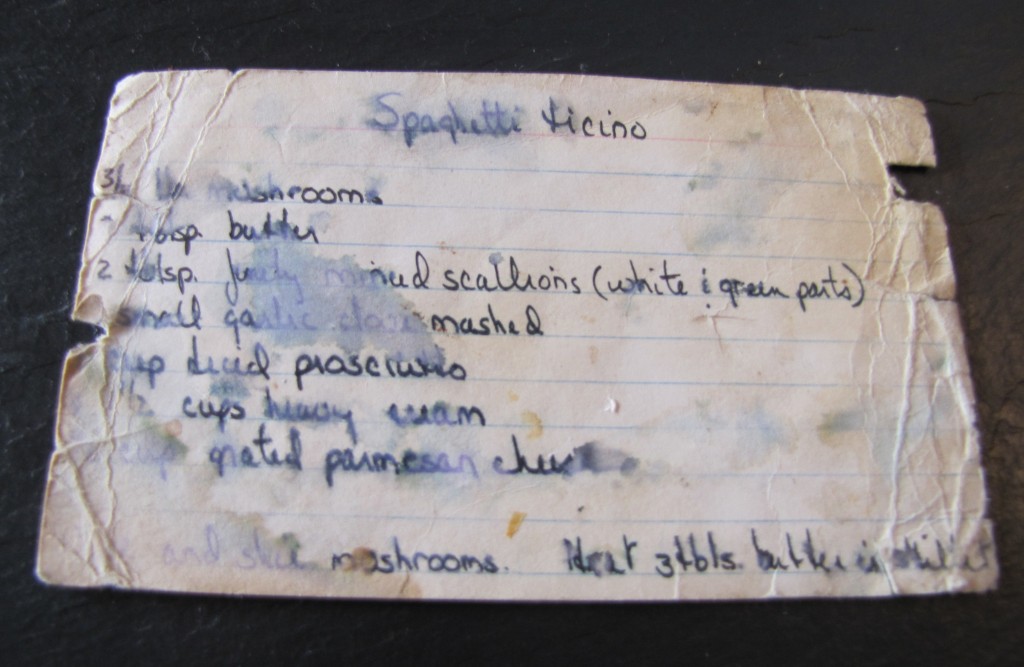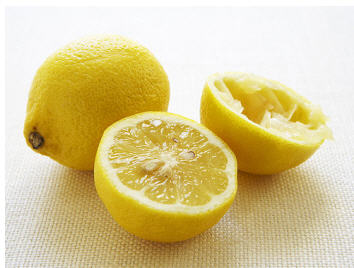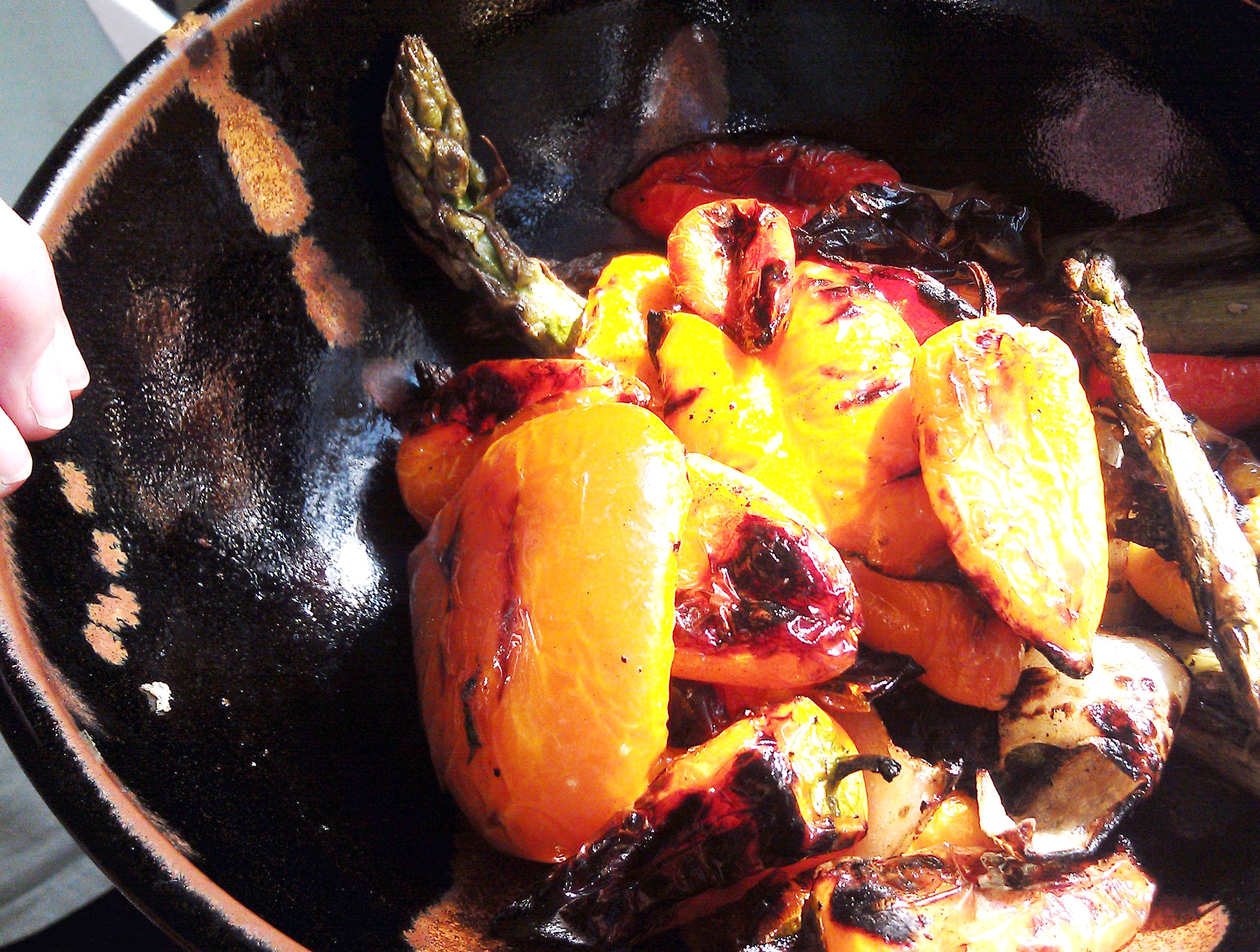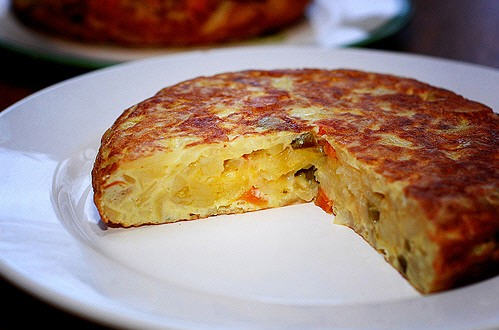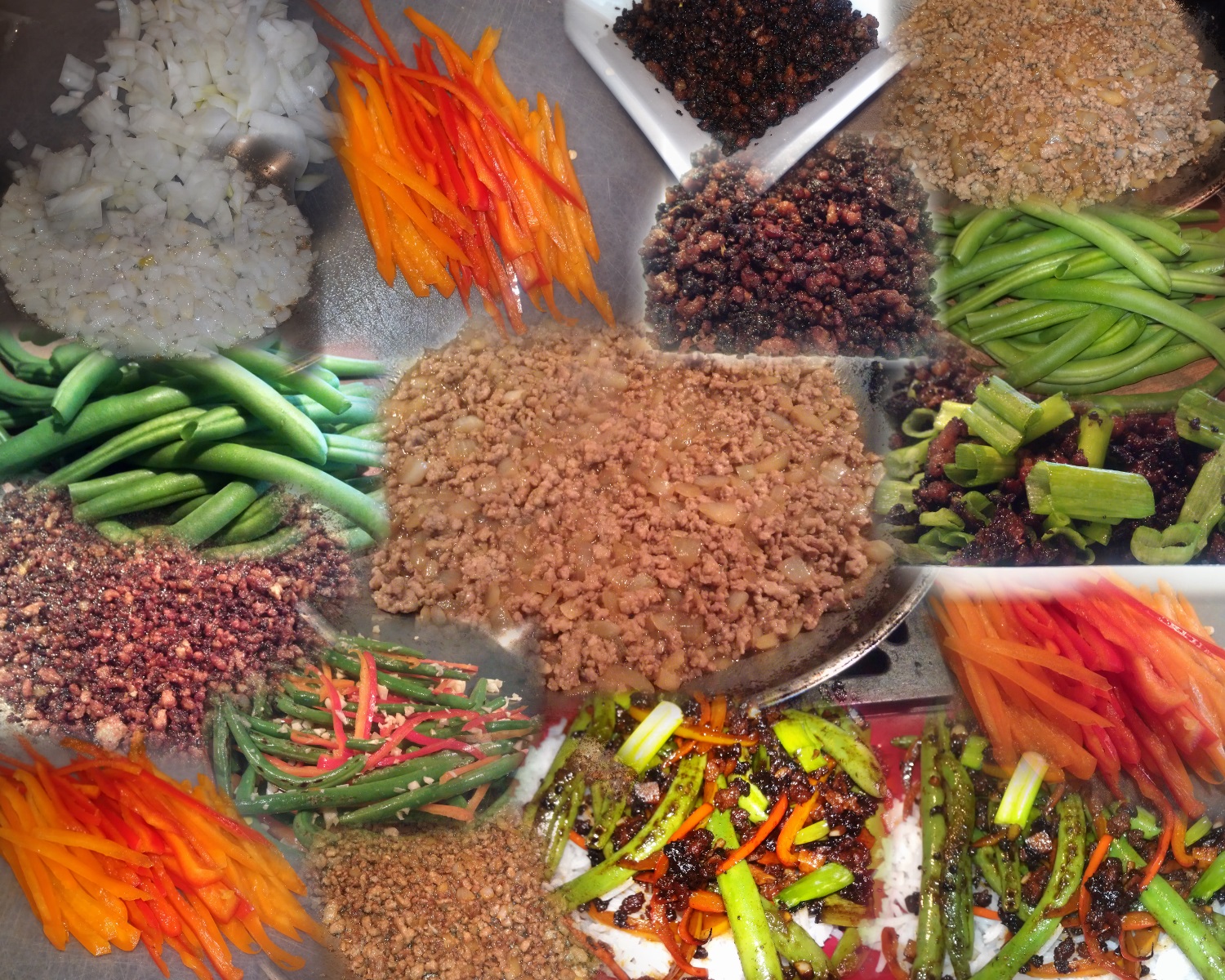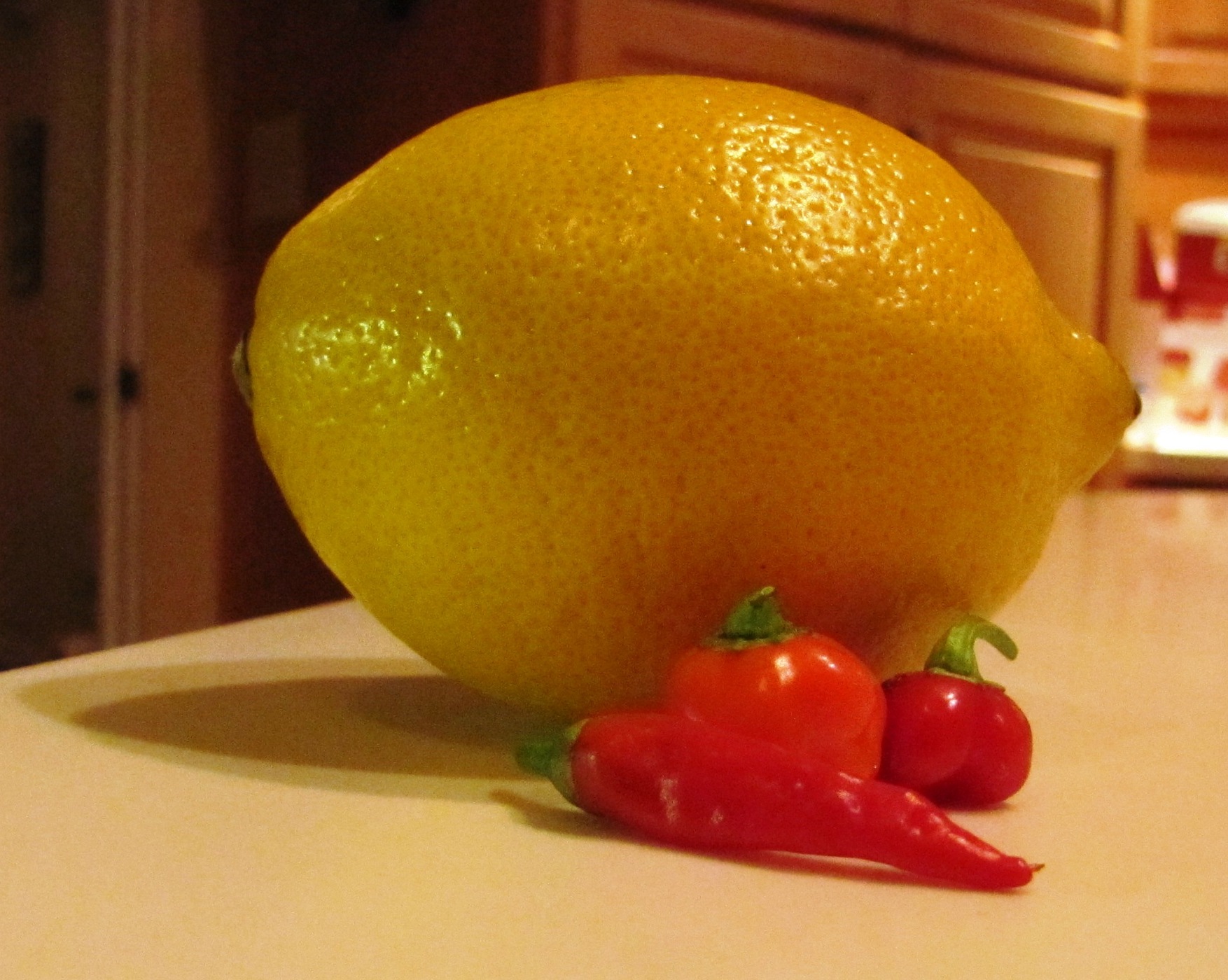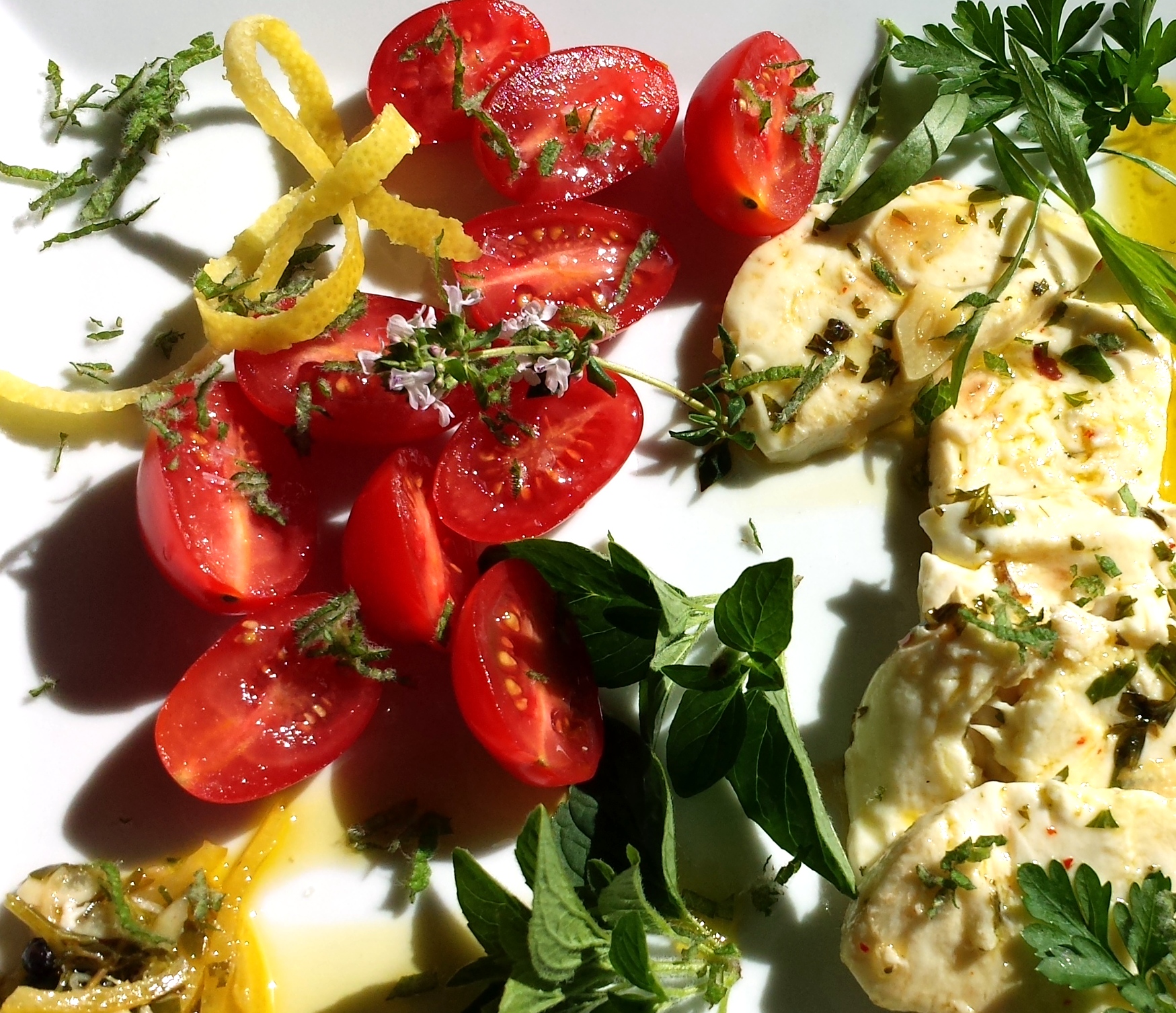In which I was Tricked into Becoming a Cook
My wife is much smarter than I am – and for that, I am extremely grateful, even though her extreme brainy-ness can sometimes lead me around by the nose.
When we were first courting, back in the late Neolithic Era, she observed that my culinary expertise was limited to three items:
- Tuna fish salad. OK, all my friends said my tuna fish salad was the best tuna fish salad in the world, but it was tuna fish salad, plain and simple
- Hamburgers. OK, all my friends said my burgers were the best burgers in the world, but they were burgers
- Grilled cheese sandwiches. OK, all my friends – well, you know the rest
I was justifiably proud of these marginal culinary accomplishments, as my guy friends’ expertise at cooking was limited to food groups with names like Campbell’s, Princes, and Kraft.
One day, after we’d gone out together for perhaps 3 months or so, she announced that she’d like to cook me dinner. I took this as an expression of love – and it may well have been – but it was also an expression of “IF I HAVE TO EAT ONE MORE TUNA FISH SANDWICH, I AM GOING TO SWIM AWAY FOREVER” likely combined with, “IF WE HAVE TO EAT OUT ONE MORE TIME, YOU WILL HAVE TO SELL YOUR CAR.”
Told you she was smart.
So, she told me she was making spaghetti. That was cool. I knew how to make spaghetti. Boil pasta, pour sauce from jar on top, shake cheese on top from little green tube. Done. Spaghetti. I asked if I could help – she said,”No, I’ve got it, you just sit back and enjoy.” Hmmm. . .OK. I poured wine for us and we drank it in the kitchen of my small Somerville, MA. apartment whilst she moved briskly about, chopping things (do you have a cutting board? Ummmm. . .isn’t the counter a cutting board, too??), combining, moving, pouring, shaking.
I was entranced by the spectacle. Of course, she could have been preparing a dish of pea gravel on wood chips and I would have been entranced by her moving about. That’s just how it was.
At some point, she announced, “OK, I think it’s ready. Get a couple of plates and warm them up.” Warm the plates? Heat, heat, heat – ah! I ran them under hot running water, then dried ’em off. Mission accomplished. My work was done, except for pouring more wine.
Then we sat down to table. There were candles, folded napkins, forks, spoons, knives – water in glasses!! A large bowl filled with an attractive mixture of greens that was something she called a “salad”. Funny little slices of bread that looked like they came from a loaf designed for dwarves (I later learned this was called a “baguette”).
And the main course!! As soon as it hit the table, I inhaled its fragrance and my mouth began watering. With some restraint, I waited until we’d toasted each other’s health (another nifty ritual learned from my smart wife). Then dug in.
O M G!!
What on Earth was this? It was divine, it had lots of flavors, but they didn’t compete – they were just kind of cozy with each other. The textures of the ham (she called it “prosciutto”) and vegetables blended perfectly together in a smooth, silky sauce.
“Whd oo call ‘es” I mumbled between mouthfuls. “What?” she asked, looking at me sharply, but clearly enjoying my non-stop fork-to-mouth action. “Er, what do you call this?” I said, convulsively swallowing the last savory morsel and looking over towards the stove to see if there might be more.
“Oh, it’s called spaghetti ticino,” she said. “Spaghetti ticino,” I parroted. “It’s really good.”
“Thanks, honey, it takes a little effort, but it’s worth it, isn’t it?” “Absolutely,” I said, thinking that it had taken very little effort on my part. And yet. . .
“How do you make it,” I asked.
“Oh, it’s a pretty complicated recipe,” she said, smiling gently.
“I like complicated things,” I asserted.
“I really think you’d want to start with something a lot simpler to make, and work your way up,” she said.
“No. I want to make this. I can totally make this,”
“Well, if you want to try, here’s the recipe I have for it,” she said, pulling out a little 3×5 index card covered in ingredients and arcane instructions. It was like finding a card written in Sumerian, but – well, I knew what most of the words meant, and I was sure I could figure it out.
I spent the next few days acquiring ingredients. I soon realized I had nothing, so I went to the Star market and began acquiring the basics.
Once I had everything, I spent some time with the little recipe card. I pondered it, thinking it through, trying to grok its essence (as we used to say back then). When I felt all grokked up, I started.Everything seemed to go quite nicely, although the spaghetti appeared to be congealing into a unified mass of starchy strands.
Serving time. Voila! I’d invited her over for dinner and she’d accepted – this was going to be a surprise. And it was. “What is this,” she asked, picking idly with her fork at a gooey mass of congealed pasta that lay submerged under a glutinous sauce that resembled library paste.
“It’s spaghetti ticino,” I said brightly, proud of my accomplishment, but feeling that I may perhaps not have entirely achieved my objective.
With a fine display of sportsmanship, she chewed her way through it, pausing only for frequent refills of wine. “How do you like it,” I said, quivering with anticipation.
“It’s,” and there was a long pause during which I could actually feel her brain searching for words, “pretty awful, but not bad for a first try,”.
“OK, well, it was my first try, but next time it’ll be wonderful,” I said, rising to the challenge.
“OK,” she said
“OK,” I said, pushing away my half-eaten plate and wondering if we should go out and have a little more food at a restaurant.
I spent much of my spare time perfecting my chops on that recipe and grew quite fond of cutting, chopping, organizing, mixing, thinking, tasting, smelling, touching – the whole range of things you do to create good food. And once I’d mastered that dish, I thought “that was fun,” and moved on to another. And another.
A Long Time Later
It’s over 30 years later. We’re still married. Although my wife is an outstanding cook, I do most of the cooking around home, because – well, because I really like it. Her Tom Sawyer-like ploy with the spaghetti ticino was a complete success (“Oh, I don’t know if you should try that – it takes experience and skill to cook something like that”). To this day, she swears she had no ulterior motive when she explained how complicated it was to make the dish, and how she just didn’t want me to frustrate myself in the world of cookery. Like I said – she’s a lot smarter than I am.
The Recipe – Spaghetti Ticino
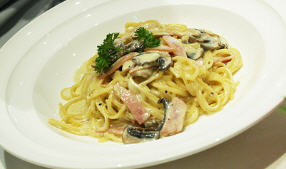
I haven't made this today, and it doesn't seem to exist online, but this is very close to what it should look like
I’d like to note that I have so far been unable to locate this recipe (perhaps because I’m spelling Ticino wrong) online. Nonetheless, it’s a lovely dish, albeit a bit on the dense side – taken from an era when Julia Child’s star was beginning to ascend.
Ingredients (serves 2-4 depending on hunger levels and whether served as a course in a larger meal)
- 3/4 lb. crimini mushrooms
- 3 TB. butter
- 1/4 Cup finely minced scallion, both white and green parts, plus 1 TB.
- 2 garlic cloves, finely minced or pressed
- 1 Cup coarsely diced prosciutto
- 1.5 Cups heavy cream
- 1/2 Cup grated Reggiano Parmesan cheese plus additional cheese for sprinkling on top
- 1 TB. finely minced parsley for sprinkling on top
- 8 oz. spaghetti. You could use linguine, but spaghetti is the way I’ve always done this dish – I think the shape just works well with the sauce.
- Salt, freshly ground pepper to taste
Preparation
Fill a large pot with water and salt (I use about 1 TB salt / half gallon of water), and set to boil.
Clean and slice mushrooms. Today, I might use a mushroom brush or even just rub the mushroom skin with my fingers to remove any clinging bits of twigs or dirt. Heat a 10-12″ saute pan, then add 3 TB. butter, swirling and shaking until the butter stops foaming. Add the sliced mushrooms, cooking them on medium heat (you don’t want to brown them) for a few minutes.
Add the 1/4 Cup scallions and garlic, and cook for another 2 minutes or so until they are softened and fragrant.
In a separate small skillet heat 2 TB. butter. Add the prosciutto, shake it and toss it – or stir thoroughly. Cover and cook for five minutes over low-to-medium heat, until the prosciutto is softened and beginning to crisp just a bit. When this happens, remove the skillet from the heat.
Add spaghetti to your boiling water. While the spaghetti is cooking, add cream to your cooked mushroom mixture. Cook over medium to medium-high heat, stirring constantly and scraping from the bottom to prevent any burning. The sauce should reduce by about a half. This should take about 5 minutes or so. Once it’s reduced, add the prosciutto and fold into the sauce. Taste and correct for seasonings. That means add salt and pepper to your taste.
Drain the spaghetti (if a little bit of water clings to the spaghetti, that’s fine). Mix the drained spaghetti with the sauce and serve immediately in warmed bowls, sprinkling with the remaining TB of finely minced scallion, the parsley and additional cheese.
This is a simple – some might even say primitive – recipe, but it works. We fed this to our kids when they were little, they ask us to make it now that they’re grown. We eat it ourselves occasionally, but with a bit more caution than in days of yore.
And – it’s such a great jumping off spot for your own creativity. There are countless variations on this theme – give it a try. It’s a complicated dish and. . .well, it’s just pretty tough to make. . .but if you really want to try it. . . 🙂
I’ve kept the recipe card for over 30 years – it’s a part of our family history.



